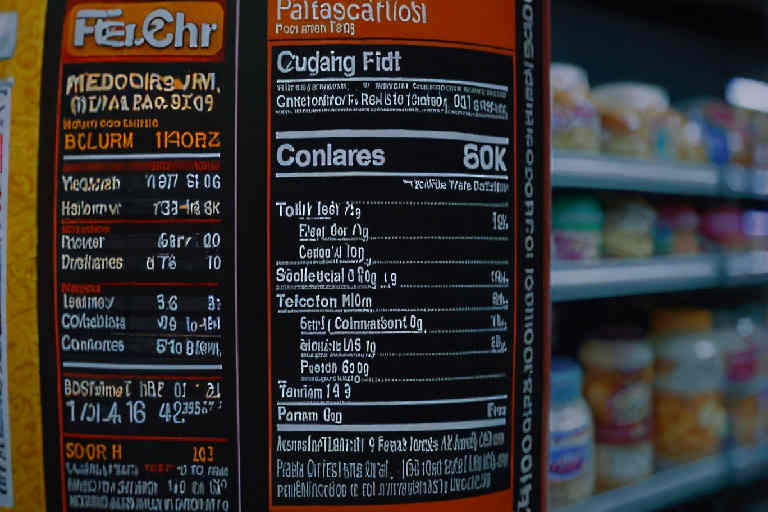Food labels aren’t just a label with fine print on the back of packages. They’re like a snapshot of food chemistry, letting us know what is inside, Understanding these labels can seriously change how you shop and eat.
Every time you pick up a product, you’re making a choice that affects not just your taste buds but also your waistline, energy levels, and overall health. By learning to read food labels, you get to play detective, figuring out exactly what’s inside the package. It’s not just about avoiding the bad stuff like extra sugars and trans fats, but also making sure you’re getting enough of the good things like vitamins and fiber.
Reading food labels helps you stay on top of your dietary goals. Whether you’re counting calories, cutting down on sodium, or boosting protein intake, labels provide the info you need to make informed decisions. This isn’t something you want to gloss over if you’re after a balanced diet.
The importance of food labels goes beyond just individual health. It’s about being a proactive consumer in a world full of confusing marketing and advertising. Labels cut through catchy buzzwords, letting you choose products that align with your health goals and lifestyle. Food labels are pretty powerful tools when it comes to mastering your diet and making informed decisions about your health.
Navigating Nutritional Facts: What to Look For
When you’re browsing the aisles, that info on the back of a package isn’t just for show. Knowing what to focus on can make all the difference when deciding what gets tossed in your cart. It’s all about mastering that label to align with your health dreams.
Calories might be the first thing that catches your eye. They tell you how much energy you’ll get from one serving of that food. But keep an eye on those serving sizes, because sometimes they’re a bit tricky—like when you discover your supposedly low-cal snack is actually meant for two!
Sugars, especially added sugars, are players to watch out for. Sneaky sugars can hide under a multitude of fancy names, and that’s why checking labels is super important. If the goal is to slash sugar intake, the label’s your best friend. Also a lot of artificial sweeteners may be used in a product, and some people may need to steer clear of those.
Fats on food labels are broken down into saturated and trans fats. Zeroing in on these can help maintain heart health and keep those bad cholesterol levels in check. It’s not about eliminating fats entirely—some, like the healthy types, are things your body needs.
Daily value percentages are like guides, showing how much a nutrient in a serving contributes to a daily diet. If something reads 5% or lower, it’s on the lower end. Hit that 20% mark, and you’re looking at a high percentage for that nutrient. This helps in keeping everything in check, from vitamins to sodium levels.
Take note of allergens if they matter to you or anyone in the family. Labels will often flag common culprits like nuts, dairy, and gluten, helping keep potential reactions at bay. It’s not just about steering clear but ensuring whatever you eat caters to your exact needs.
By knowing precisely what to spot on labels, you’re not just buying groceries—you’re buying into a healthier way of living where every meal aligns with your nutritional needs.
The Regulatory Backbone: Ensuring Safe and Honest Food Labeling
Food labels don’t appear by magic. There’s a whole system in place ensuring that when you read those tiny words, you’re getting the truth—no surprises hiding where you don’t expect them. Regulations are the backbone of this transparency, making sure food labels match what’s actually inside.
Over the years, food labeling laws have evolved to meet the needs of modern consumers who are more interested in what they’re eating. From understanding GMOs to clearer allergen warnings, these changes reflect the growing demand for transparency. It’s a constant adjustment game between what consumers need and what regulations enforce.
Empowering Consumers: Making Better Choices Through Label Literacy
Knowing how to read food labels isn’t just a survival skill—it’s a superpower that puts you in charge of what you’re eating every single day. The more skilled you get at understanding those lists and numbers, the more empowered you become in making decisions that support your health and wellness.
The fact remains that food companies sometimes make use of ingredients that serve them, but they don’t serve you. In some cases, profit margins are more important to them then what may best for your well being. For example, The FDA has announced a banning on the use of red, number 3, a synthetic dye that gives food and drinks their bright red cherry color but has been linked to cancer in animals. Food companies could have used a real, natural source for that color, but the synthetic was cheaper, and thus better for the bottom line.
Developing label literacy starts with practice. Get educated. Research, read, and study the most common ingredients and additives. Next time you’re out shopping, take a few extra seconds with each item, turning it around to see what’s really inside. It’s like learning a new language, but one tailored to keep you healthy.
Real-life stories abound of folks who’ve transformed their health journey with labels. Whether it’s losing weight, managing diabetes, or just gaining a better grip over what you consume, being informed through the fine print has driven countless success stories.
Plenty of educational campaigns and resources are out there to help you level up your label-reading skills. Apps, workshops, and online courses offer guidance and insight, making it easier than ever to become a savvy shopper who knows exactly what’s going into your cart.
Encouraging better practices doesn’t just stop at shopping for your own kitchen. The more consumers demand transparency, the more brands listen, reshaping how products are labeled. So, your informed choices actually contribute to broader changes in food labeling practices across the industry.
By mastering label literacy, not only do you steer your eating habits towards better health, but you also join a community of consumers dedicated to pushing for honesty and transparency in the food industry.

